7 most scandalous paintings of the Tretyakov Gallery
Categories: Art | Beauty | Culture | Design and Architecture | History | Society | World
By Vika https://pictolic.com/article/7-most-scandalous-paintings-of-the-tretyakov-gallery.htmlToday, it is hard to believe that these classic works of Russian art once could have caused a storm of controversy among contemporaries. But now they are one of the most famous and beloved works of Russian art.
The paintings were originally acquired by the founder of the famous gallery, Pavel Tretyakov, who possessed incredible artistic intuition and was guided exclusively by his own taste. Since his gallery was public, Tretyakov had to take into account the strict rules of censors - some paintings were not only not accepted, but were completely banned from showing. However, thanks to the efforts of Tretyakov, they survived, and today it is impossible to imagine the leading repository of Russian art without them.
7 PHOTOS
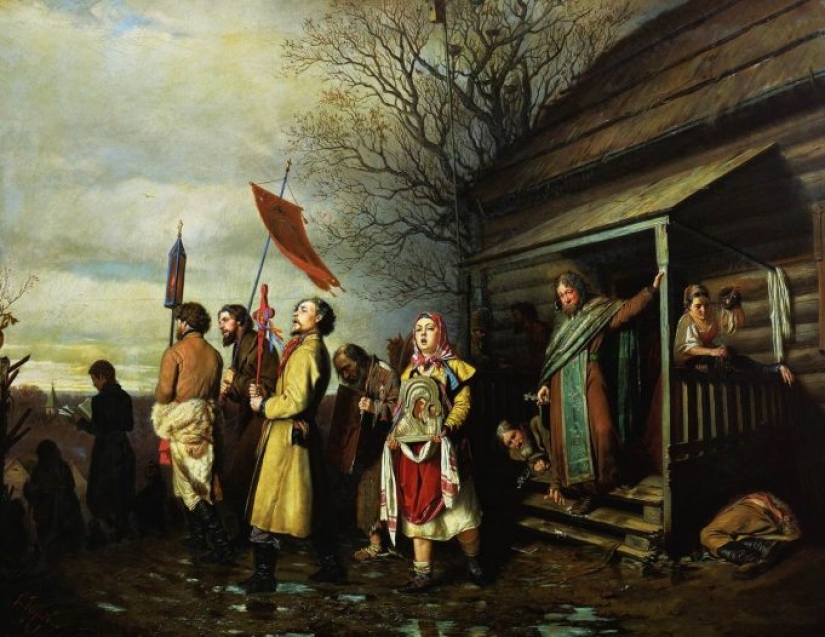
1. Vasily Petrov, Rural religious procession at Easter (1861).
Vasily Perov was one of the founders of the association of Wanderers. He avoided secular topics and instead portrayed the everyday life of ordinary people. His famous painting "Troika" depicts poor children pulling a barrel of water. Perov was a famous artist, but his Rural Procession at Easter caused a storm of indignation. Most of all, the public was outraged by the fact that the artist depicted the celebration of Easter in the form of a drunken procession - peasants with half-closed intoxicated eyes, a drunken priest crushing an Easter egg under his foot, and drunks lying at the church doors. In St. Petersburg, the painting was removed from the exhibition and the artist was accused of immorality. However, Pavel Tretyakov, despite attempts to dissuade him, nevertheless acquired the picture.
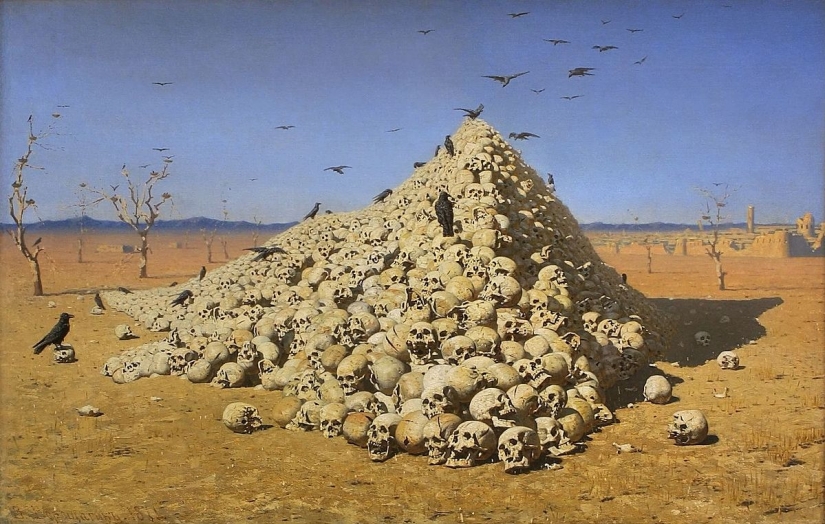
2. Vasily Vereshchagin. The Apotheosis of War (1871).
Vereshchagin traveled extensively in Central Asia and painted many canvases. This painting, however, became his most famous. Originally it was called "Triumph of Tamerlane" and referred to the legend about the soldiers of the famous Mongolian commander, who built pyramids from the skulls of decapitated enemies. The sight of the skulls, as well as the scorched desert and the city in ruins in the background, shocked the noble St. Petersburg public. Vereshchagin dedicated his painting "to all the great conquerors - past, present and future."
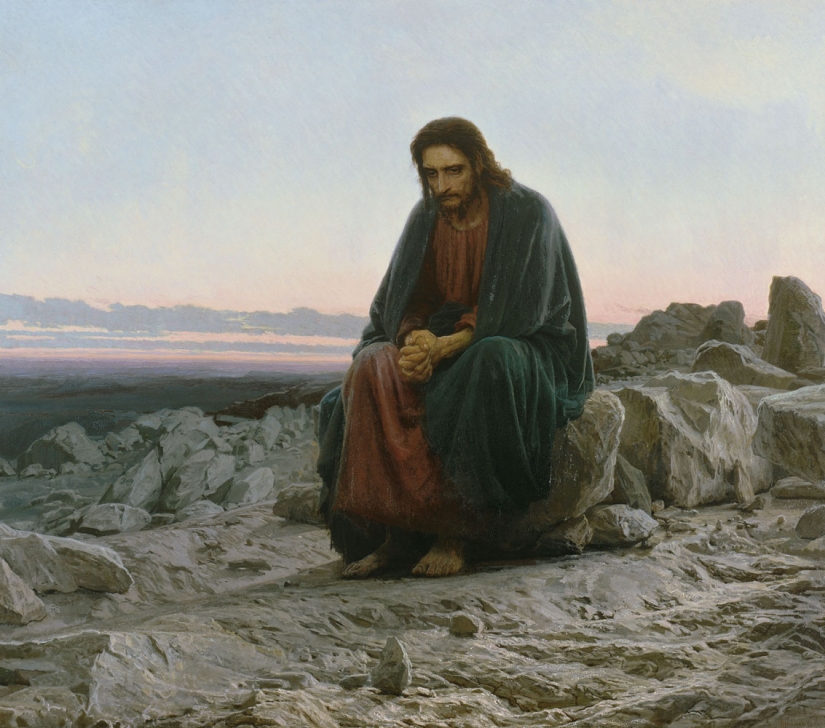
3. Ivan Kramskoy. Christ in the Wilderness (1872).
The life of Christ was a popular theme among 19th-century artists, but Jesus was usually portrayed as serene and inspiring, rather than emaciated and alone in the middle of the desert. Kramskoy's canvas depicts the temptation of Christ by the devil during his 40-day fast after baptism. His image is extremely human, and attention is drawn not only to the tense expression on his face, but also the intertwined fingers of interlocking hands. Eyewitnesses recalled how the painting split public opinion at the exhibition. Some were struck by the depth and portrayal of suffering, while others expressed outrage at what they considered “blasphemy” and the desecration of something sacred. Kramskoy himself recalled that they turned to him and asked why he portrayed Christ in this way. In despair, the artist pointedly objected that he had not been seen either. As for Pavel Tretyakov, he immediately bought a controversial painting and considered it one of the most powerful works of art in his collection.
4. Ilya Repin. Ivan the Terrible and his Son Ivan on November 16, 1581 (1883-1885).
This picture still evokes tremendous emotions. In 2018, a vandal who disliked her “fake” content seriously damaged the painting. Historians often reject the myth that Ivan the Terrible killed his son, but it was Repin's scene - one of the first such bloody paintings based on a pseudo-historical story - that left an indelible mark on the popular imagination. Repin painted a canvas with a fresh memory of the assassination of Emperor Alexander II. He first showed it to his colleagues, who were stunned - everyone recognized his incredible talent. However, Emperor Alexander III did not like the picture, and the state ideologist Konstantin Pobedonostsev called it repulsive. The picture was bought by Tretyakov, but the tsarist censors banned its display. Later, of course, the ban was lifted.

5. Vasily Surikov. Boyarynya Morozova (1887).
Surikov's monumental canvas is dedicated to the schism of the Russian Orthodox Church in the 17th century and depicts a scene of the arrest of the Old Believer Boyaryna Morozova, who refused to be baptized with three fingers, as required by the church reform. The painting made a strong impression on the public as a successful experiment with a plot drawn from the history of Russia. Many praised the skillful recreation of Ancient Russia, as well as the portrayal of a Russian (and, moreover, a woman!) With a strong spirit and unbroken suffering. But the painting also had many critics who complained about incorrect composition, incorrect proportions, errors in gesture, hand placement, and other details. Some even said that the painting looked more like a gaudy motley carpet than a painting.
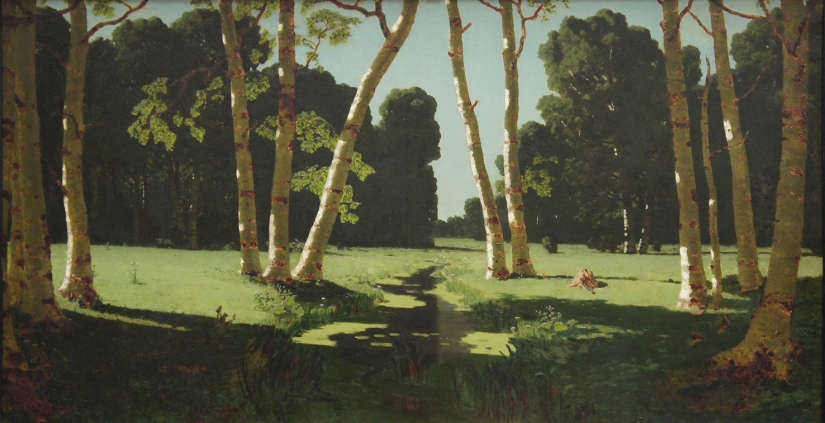
6. Arkhip Kuindzhi. Birch Grove (1879).
What can be controversial in a painting depicting a birch grove? In fact, the painting was surrounded by controversy: Kuindzhi was late with the completion of work on the exhibition of a group of artists in St. Petersburg, because of which the opening was postponed, much to the chagrin of other artists. As a result, the painting appeared on the walls two days after the inauguration. The audience admired his amazing play of light and shadow, even suspecting Kuindzhi of some cunning optical trick and believing that the picture was deliberately illuminated with light from behind. One critic, however, severely criticized the painting, writing that the colors were unnatural and that the trees stood around like stage props, were unnaturally arranged, and that they appeared to be "stained with some kind of muddy green color." The critic turned out to be one of the Itinerants hiding behind a pseudonym. Kuindzhi was so offended that he left the group - and thus, "Birch Grove" was the last work that he exhibited at his exhibitions. Naturally, Tretyakov bought it in the end.
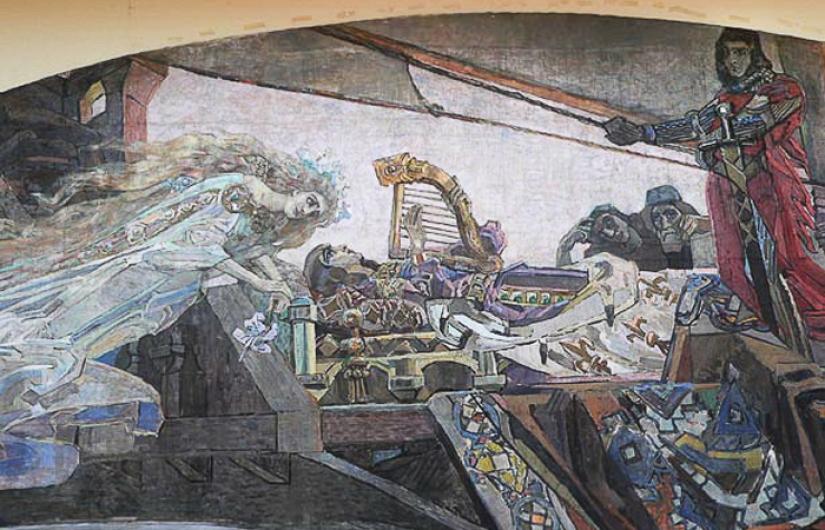
7. Mikhail Vrubel. Princess Dreams (1896).
The story of this painting reads like an adventure novel. The panel was commissioned by the collector and philanthropist Savva Mamontov for the art pavilion of the All-Russian Industrial and Art Exhibition in Nizhny Novgorod. Vrubel was still unknown at this time. When viewing the work, the jury of the Academy ordered to remove it, and a real sensation broke out, the news of which even reached Emperor Nicholas II. The latter decided that the wishes of the Academy should be respected. As a result, a compromise was reached, and the work was completed by the famous artist Vasily Polenov on behalf of Vrubel. Although the panel itself was not exhibited in the pavilion, Mamontov brought to the exhibition a large number of other paintings by Vrubel, and also organized a stage production, the set designer of which was Vrubel. Those who had the opportunity to see the work were divided. Some admired the innovation, others criticized the ugliness of the "decadent panels". The writer Maxim Gorky widely stated that this "monster" means "poverty of spirit and poverty of imagination." In the end, Mamontov had to make a majolica copy of the panel at his factory. Now it decorates the facade of the Metropol Hotel in the very center of Moscow. The panel ended up in Mamontov's private opera, and then was transferred to the Bolshoi Theater, in whose storerooms it was discovered in the middle of the 20th century, and then transferred to the Tretyakov Gallery, where it was exhibited only in 2007. A hall dedicated to Vrubel was opened, and the building had to be specially adapted to accommodate a huge masterpiece.
Keywords: Scandalous paintings | Paintings | Art | Classic works | Drawings | Russian art | Contemporaries
Post News ArticleRecent articles

Extreme gastronomy from different parts of the planet can cause tremors and awe even the most jaded consumer. Canned bread and pork ...

There are people who are able to notice beauty in every little thing around, and this skill they should definitely learn! We offer ...
Related articles

Is it possible to laying wood to name a form of art? Turns out you can. Because in the world there are such people, which gently ...

About the dangers of gluten today, it seems everyone has heard of. This wave of French graphic designer Arthur sack (Arthur Coulet) ...

After defeating the median king Arphaxad, the Assyrian king Nebuchadnezzar, who ruled in Nineveh, sent his captain Holofernes to ...

Every region of the world with a fairly cold winter has its own traditional ways of heating homes. In Western European countries, ...